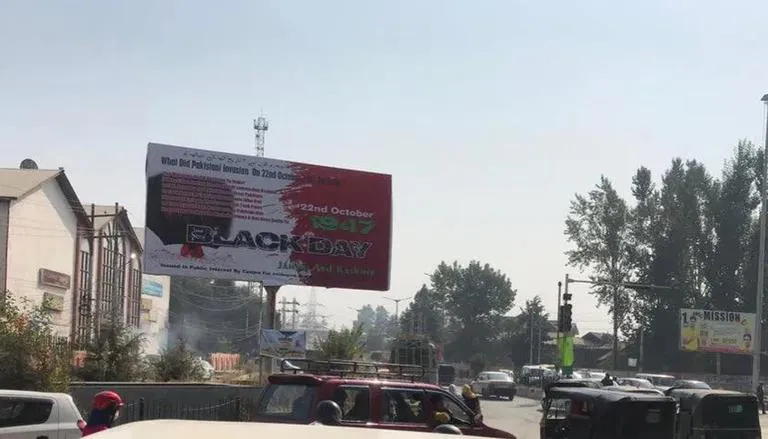Kashmiri diaspora from across the world observed the ‘Black Day’ on Saturday, October 22, marking 75 years of their mass exodus which was triggered by a genocidal campaign initiated by Pakistan-sponsored terrorists in the Kashmir valley.
During the procession carried out in Jammu, Pakistan Occupied Kashmir (PoK) refugees demanded the return of the illegally-occupied areas of Kashmir by Pakistan. The PoK refugees that were gathered in Jammu were seen with black bands tied on their arms to remember the ones who lost their lives in the inhumane crisis sparked by Pakistan’s devious military campaign against a peaceful civilian population.
GKPD stages protest in Netherlands
On the other hand, the Global Kashmiri Pandit Diaspora (GKPD) staged a protest in the Netherlands’ The Hague on Saturday on the occasion of the ‘Black Day’. The diaspora began the protest at 11 AM in front of the Peace Palace in The Hague. After about half an hour, the demonstrators moved towards Plain 1813, Willemspark, according to a press release from Global Kashmiri Pandit Diaspora.
Why is October 22 regarded as the ‘Black Day’?
October 22, 1947, is marked as the darkest day in the history of the Union Territory of Jammu and Kashmir as on this date, Pakistan launched ‘Operation Gulmarg’ with plans to carry out attacks in the Indian region of Kashmir. The operation was commanded by a serving Pakistan Army Major General Akbar Khan.
The roots of the conflicts appeared following India’s independence and subsequent partition which led to the creation of Pakistan. In August 1947, following India’s independence, Jammu and Kashmir continued to be ruled by Maharaja Hari Singh as a princely state. The state of Kashmir did not make any decisions about acceding to India or Pakistan until the British left on August 15, 1947.
After entering into a standstill agreement with Maharaja Hari Singh on August 12, Pakistan’s duplicity lay exposed after it decided to forcibly capture the land of Jammu and Kashmir, unleashing tribal invaders who looted and pillaged the state mercilessly. Ultimately, the Indian Army entered the fray, driving the troops back and Maharaja Hari Singh on October 27, signed the Instrument of Accession to merge the state with the country.

